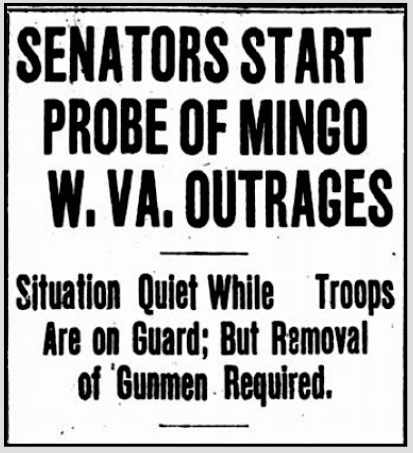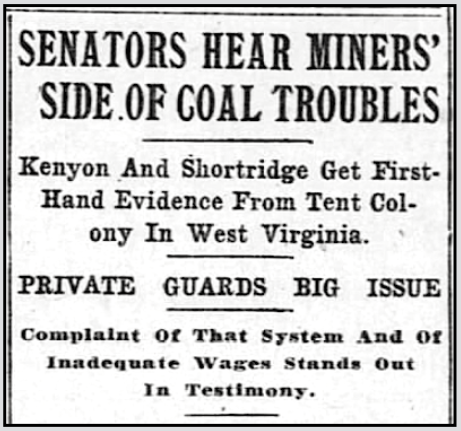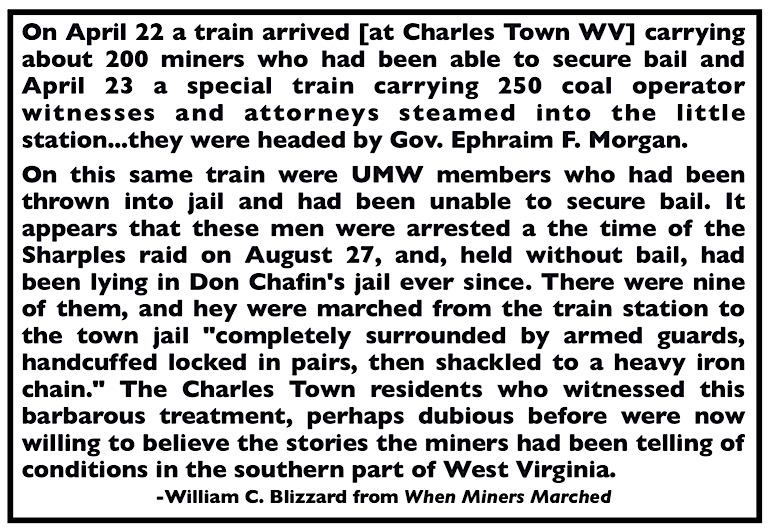 —————
—————
Hellraisers Journal – Tuesday April 25, 1922
Charles Town, West Virginia – Stage Set for Trial of Miners
From the Baltimore Sun of April 24, 1922:
(From a Staff Correspondent.)
Charles Town, W. Va., April 23.-Excited, nervous, confident here, depressed there, a small army of defendants, witnesses, attorneys and newspaper men has taken possession of Charles Town on the eve of the trials of more than 200 men on charges including treason, murder and conspiracy, growing out of the “armed march” from Marmet on Logan county last summer.
It is estimated that fully 1,000 persons are in the little county seat of Jefferson county in connection with the trials.
Trials Are Sole Topic.
All over town, in the lobbies of the hotels, on street corners, gathered in knots here and there, they are discussing one thing-the trials. They have been arriving since Friday. A grim incident this morning was the arrival of nine men in handcuffs from Logan county. They were those who are unable to get bail after being indicted in Logan last year. They were escorted to the Charles Town jail.
Central figures in the whole West Virginia industrial controversy already are in town and others are expected tomorrow and on succeeding days. There is C. Frank Keeney, president of District No. 17, United Mine Workers, and the man, who, it is believed, will be the target for the heaviest artillery of the prosecution. He faces a charge of treason and is alleged to have instigated and aided the alleged insurrection. With him are Mrs. Keeney and their son. He is at one of the hotels, smiling and high-spirited as usual.
There is Fred Mooney, secretary of District No. 17, also charged with treason. He is a bit more self-contained than Keeney, yet you would scarcely know he was to be tried on a charge that might bring his neck into a noose.
Scores Of Notables Present.
There is H. W. Houston, chief counsel for the defense, often called the “brains of the United Mine Workers in West Virginia.” There is William Blizzard, accused of being the “generalissimo of the insurrection.” There are a half-dozen special lawyers engaged by the prosecution, famous in the annals of West Virginia criminal procedure. There are scores of others of lesser prominence, though all are well enough known in their localities.
Before the week is out, Gov. E. F. Morgan will be here, having been subpoenaed by both sides. William M. Wiley, of Sharples, picturesque figure among the operators, around whose mines the fighting raged last summer, will be called. John L. Lewis, international president of the United Mine Workers, will be here Tuesday.
One big, outstanding figure, however, from all that can be learned, will not be here. He is not here tonight and it is reported he will not come. That is Don Chafin, Sheriff of Logan county. Chafin has been for years the bete noir of the United Mine Workers. He has worked against them, resisted two armed marches, and in general earned for himself the undying hatred of many connected with the big mine union…..
—————
[Emphasis added.]
From the Baltimore Sun of April 23, 1922:
In the center is C. Frank Keeney, president of District 17, United Mine Workers of America, and active leader of the union forces of Southern West Virginia. Mr. Keeney has been indicted in Logan county for treason and conspiracy. He has also been indicted in Kanawha county for alleged conspiracy and in Mingo county on charges of murder. At the left is Fred Mooney, secretary-treasurer of District 17, United Mine Workers, with headquarters at Charleston. Within 10 miles of the capital the armed march on Logan county started last fall. Mr. Mooney faces charges of treason and conspiracy. At the right is William M. Wiley. He lives in Sharples, W. Va., on the Boon-Logan county line, where the battle raged over a front of 25 miles in the wilderness. He is vice-president of the Kanawha Coal Operators’ Association and vice-president of the Boone County Coal Corporation, with five large operations on the organized edge of Logan county. He employs 1,500 union miners. He will be a principal witness in the trials at Charles Town. He gave sensational testimony before the Senate Committee on Education and Labor in Washington recently, which investigated the armed march, and of which committee former Senator Kenyon was chairman.
[Emphasis added.

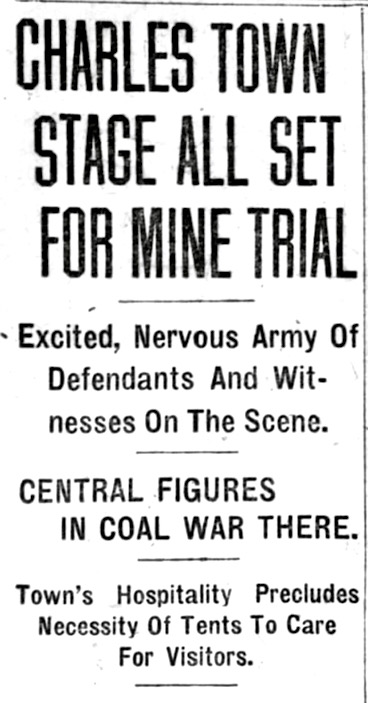
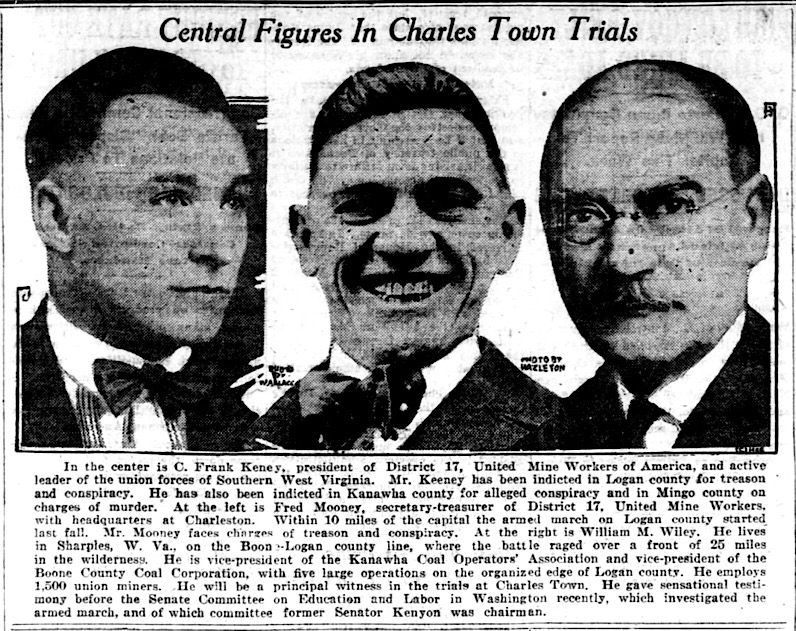
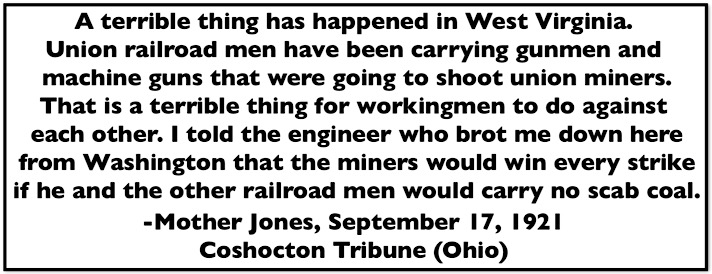 —————
—————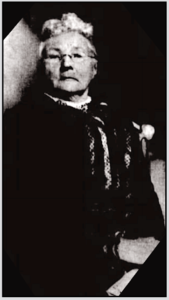
 —————
—————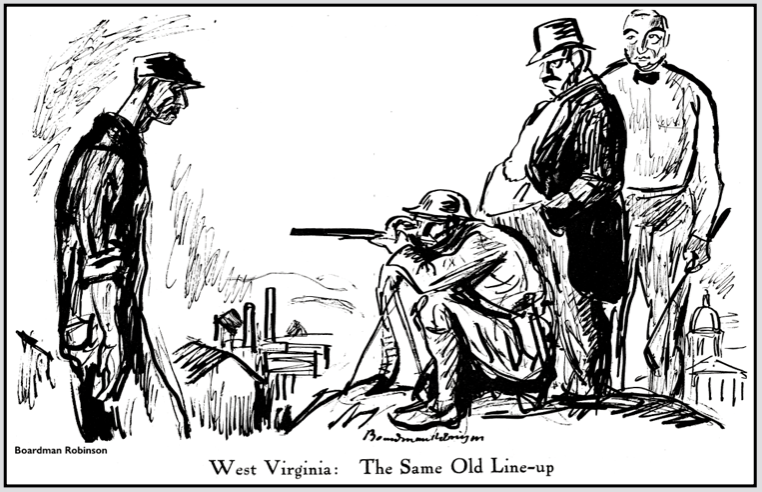
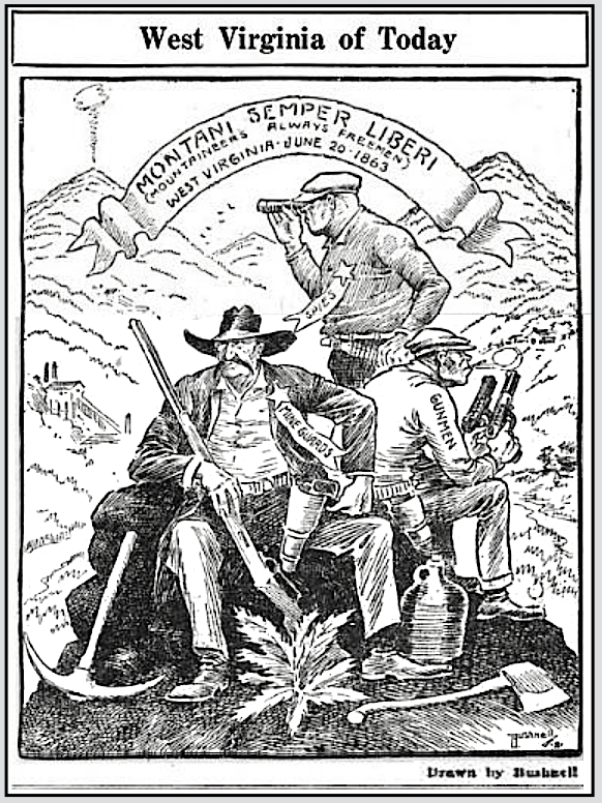
 —————
—————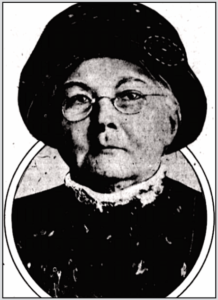
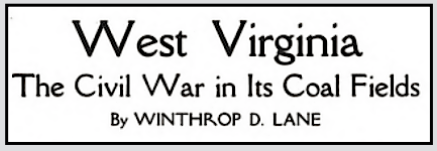
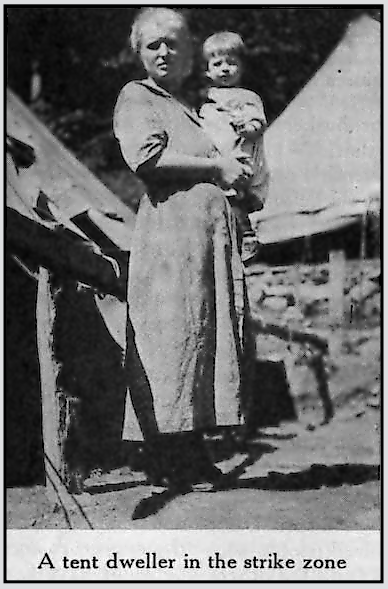
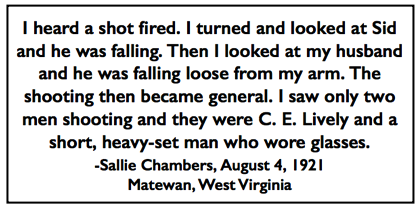 —————
—————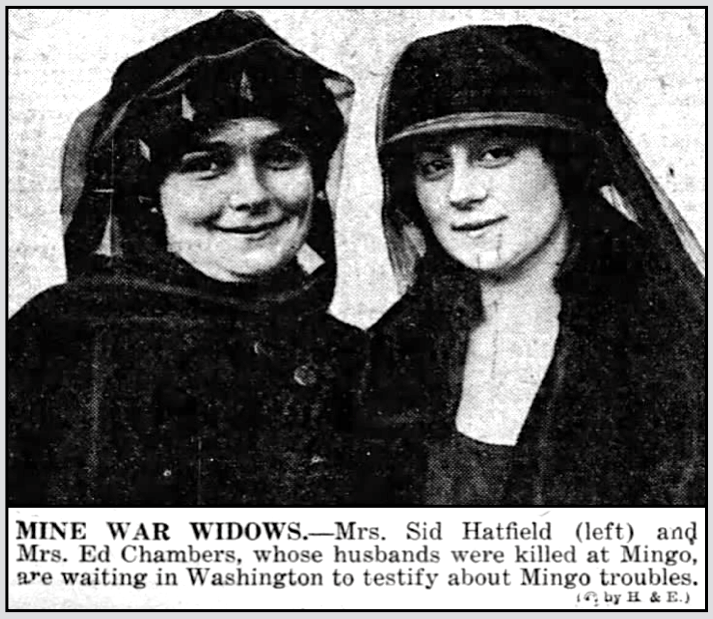
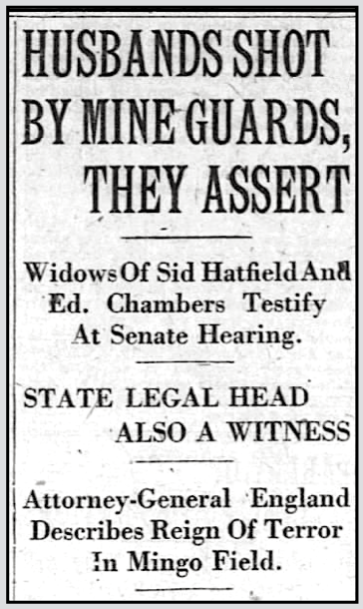
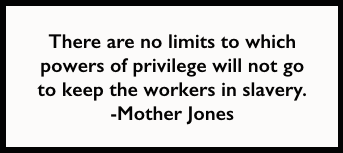 —————
—————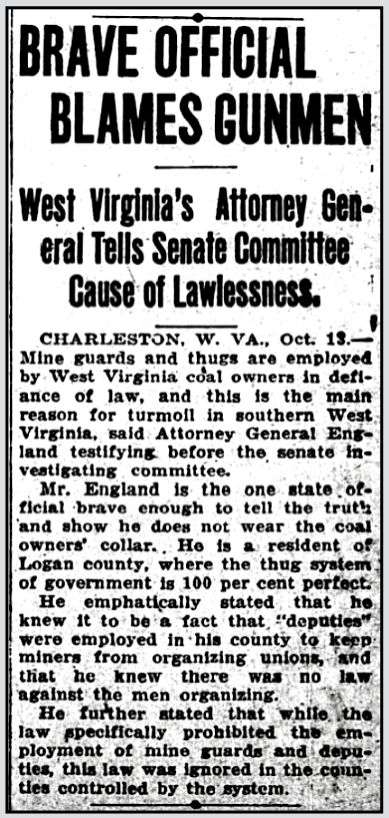
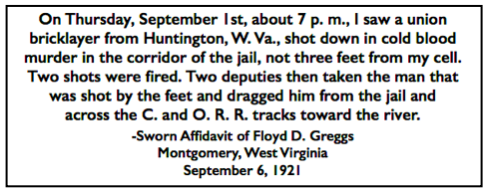 —————
—————
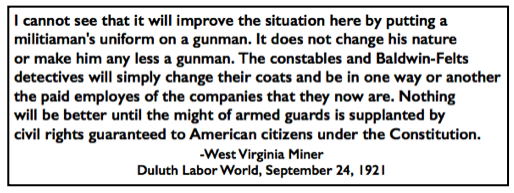 —————
—————